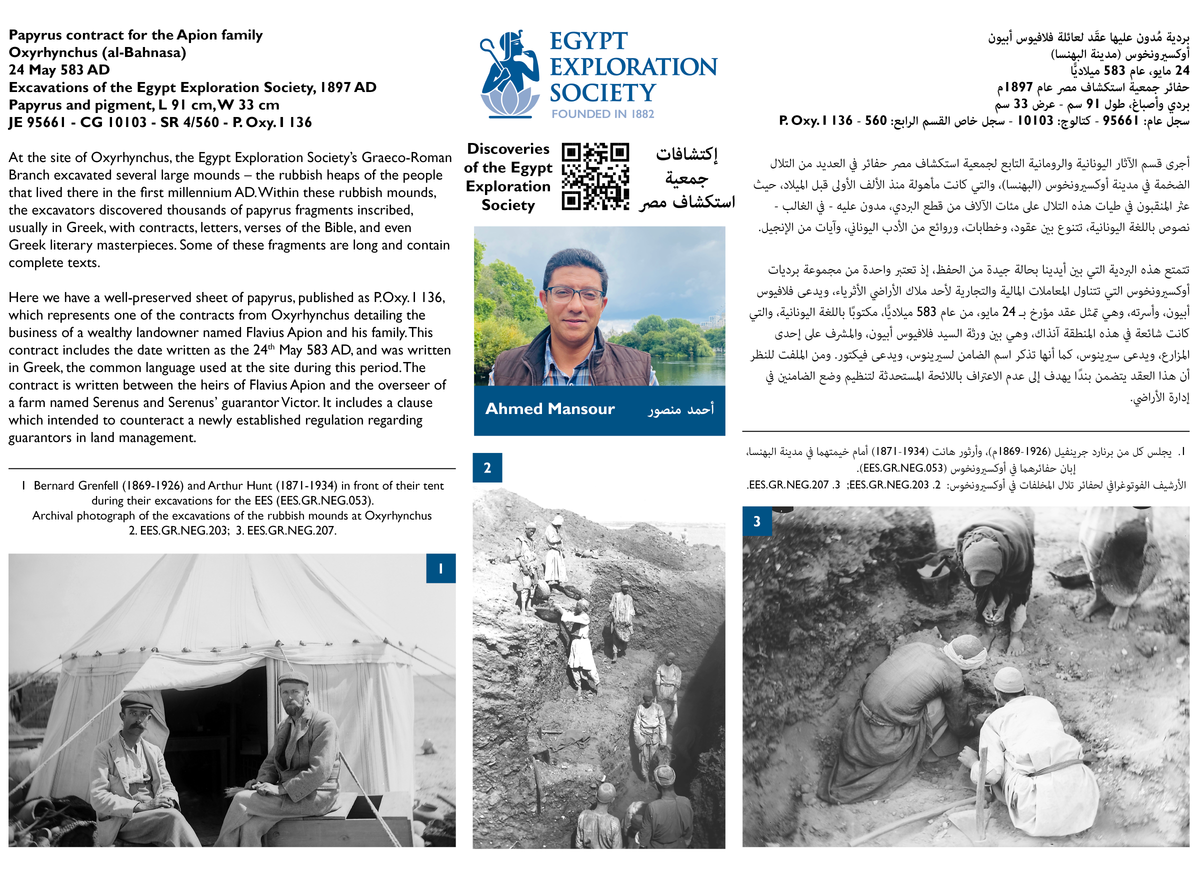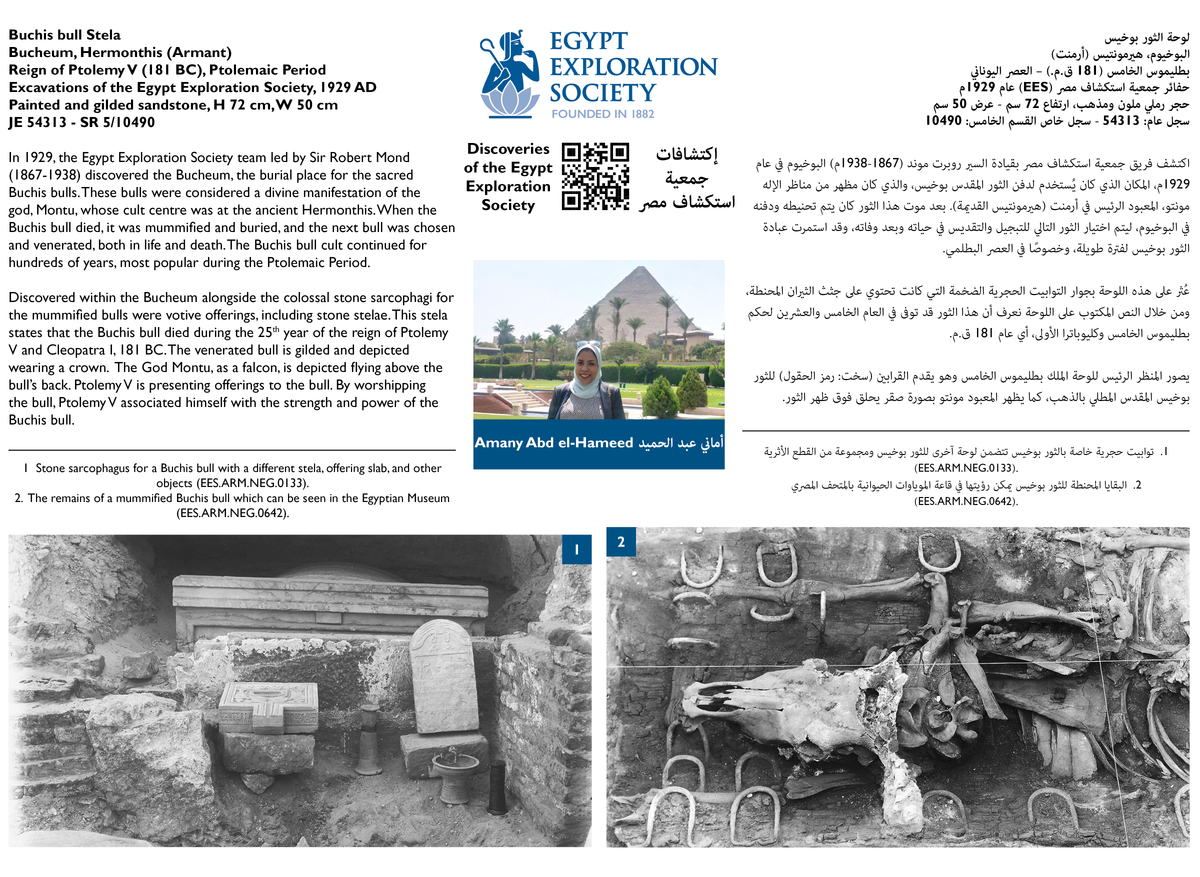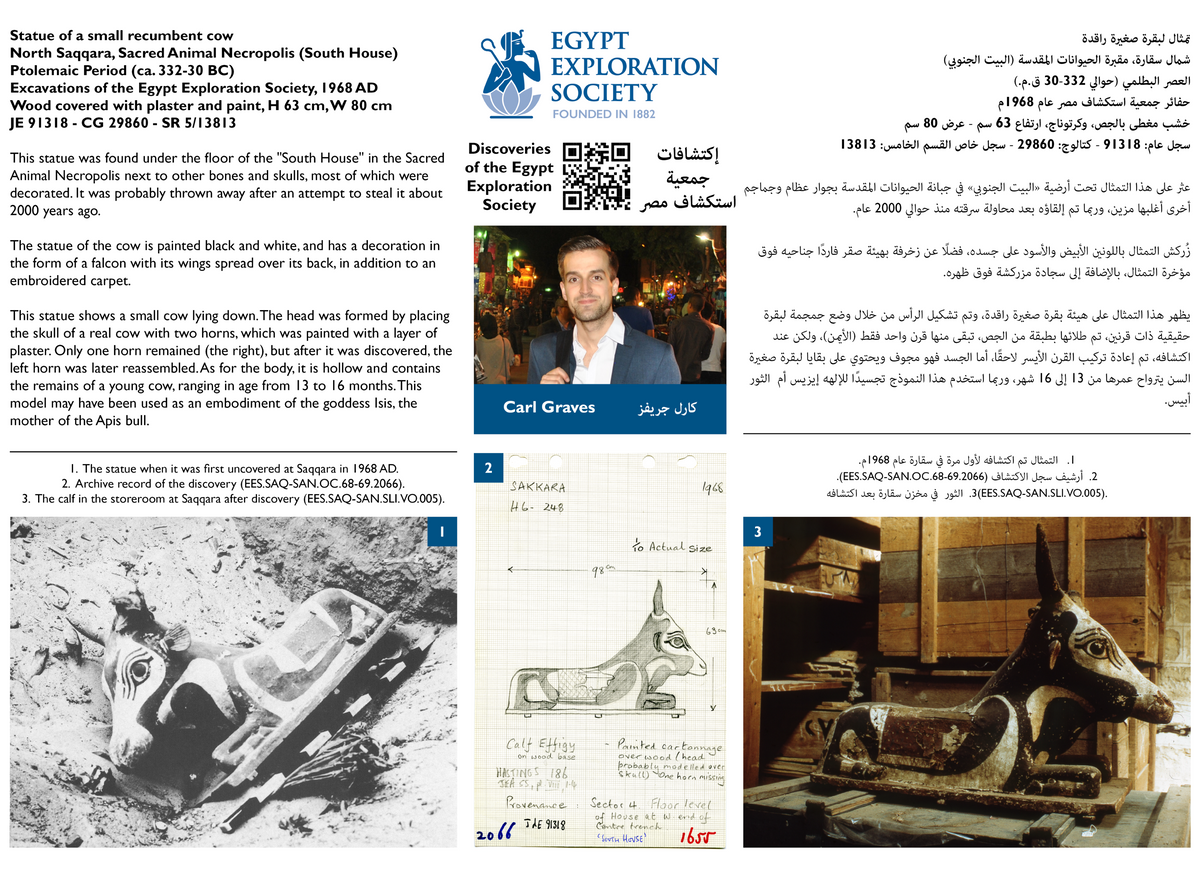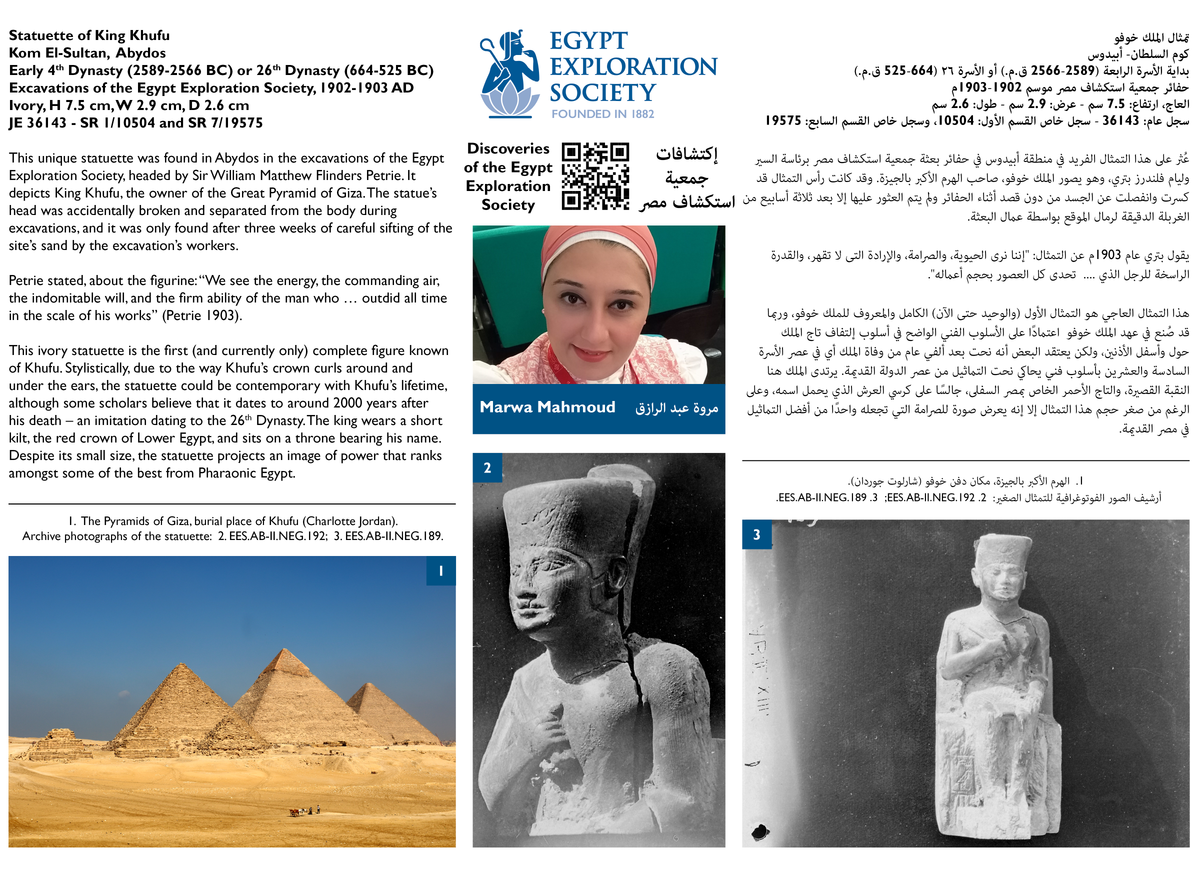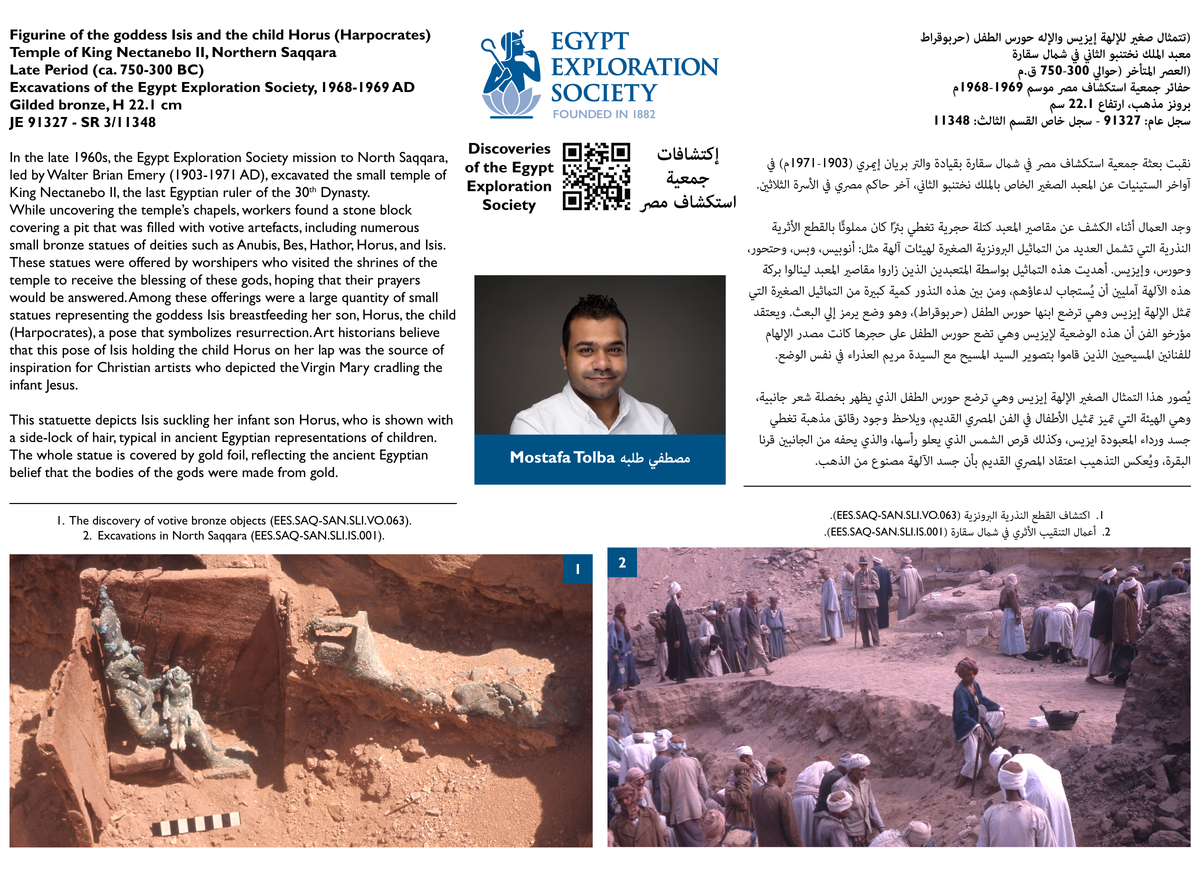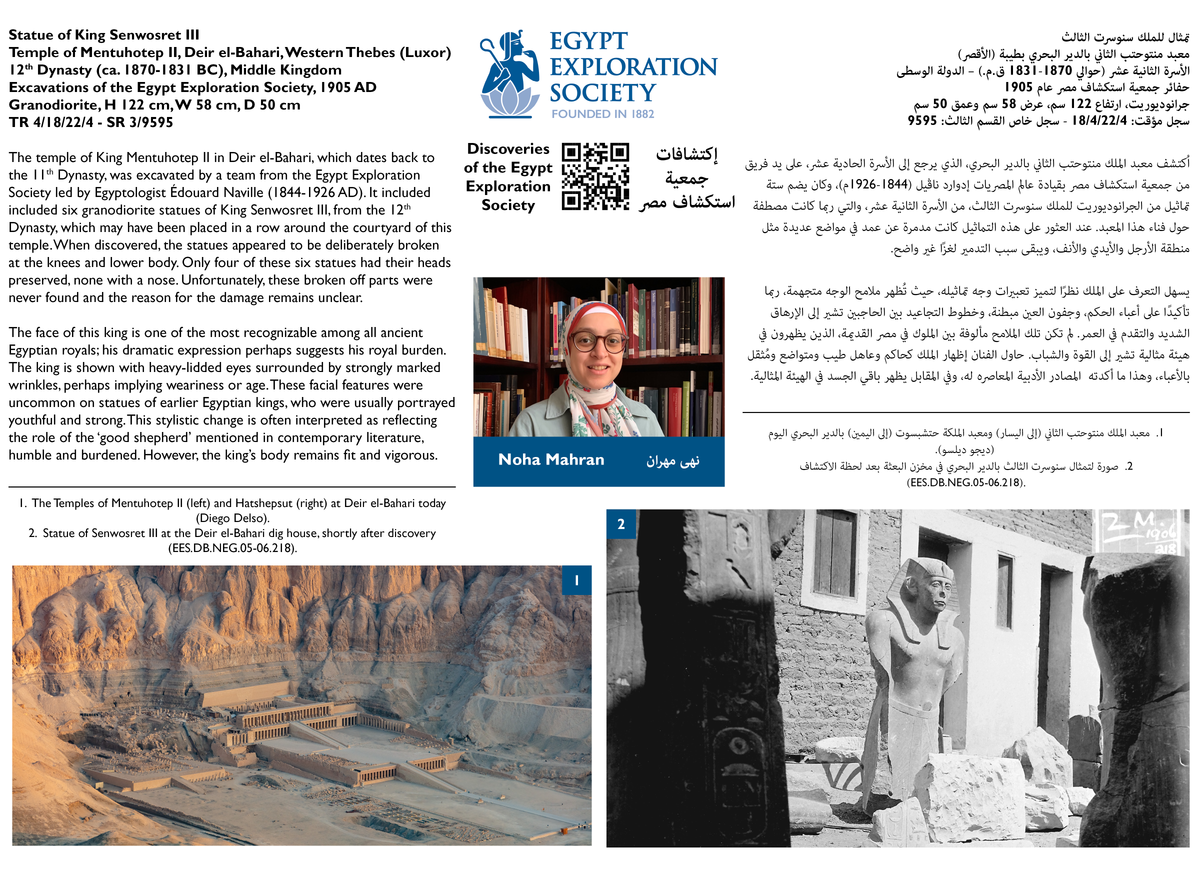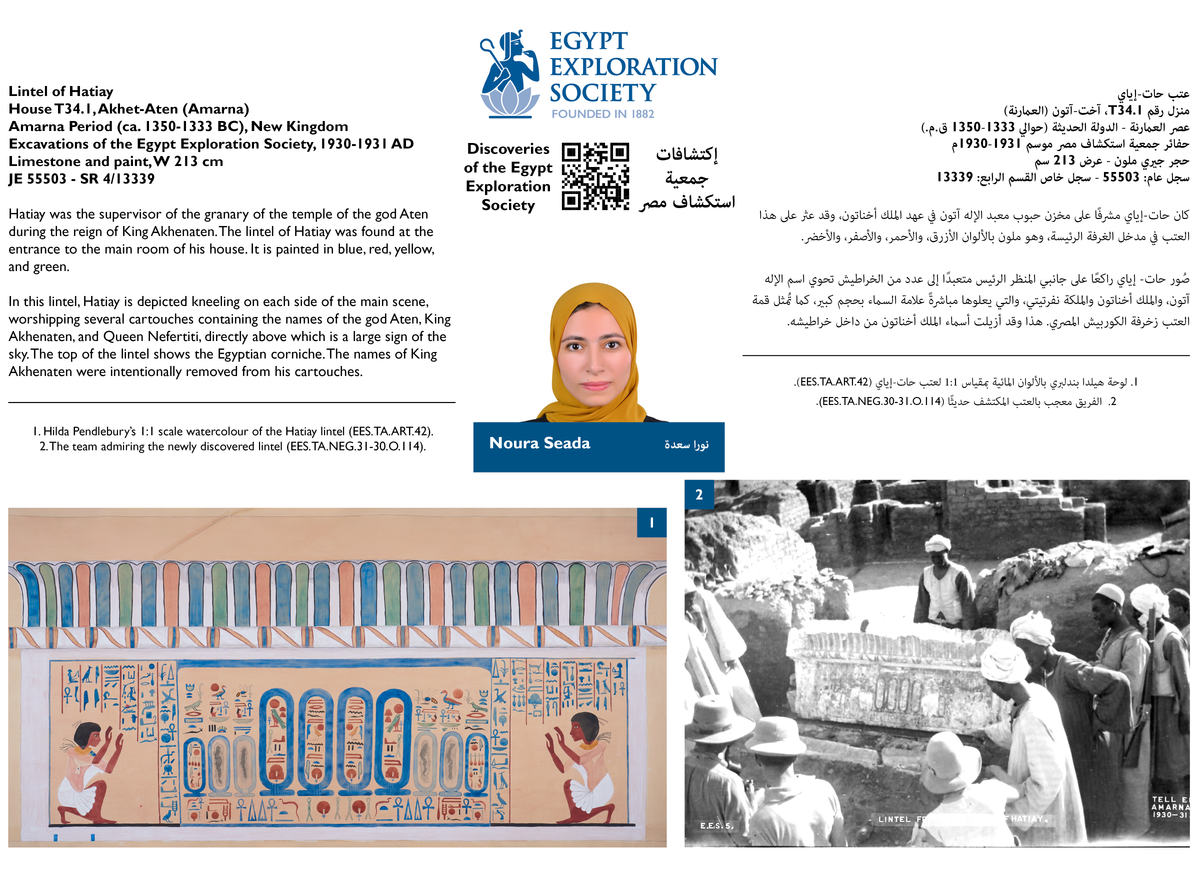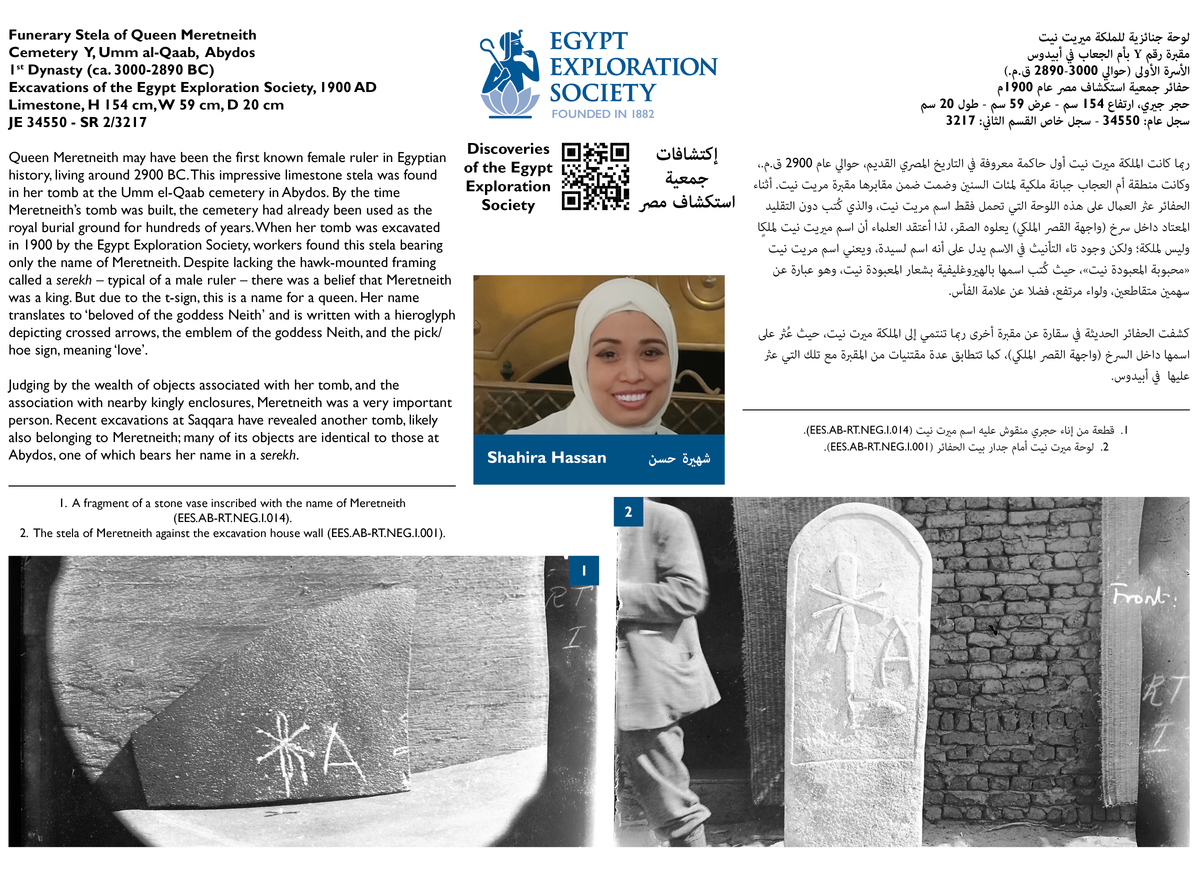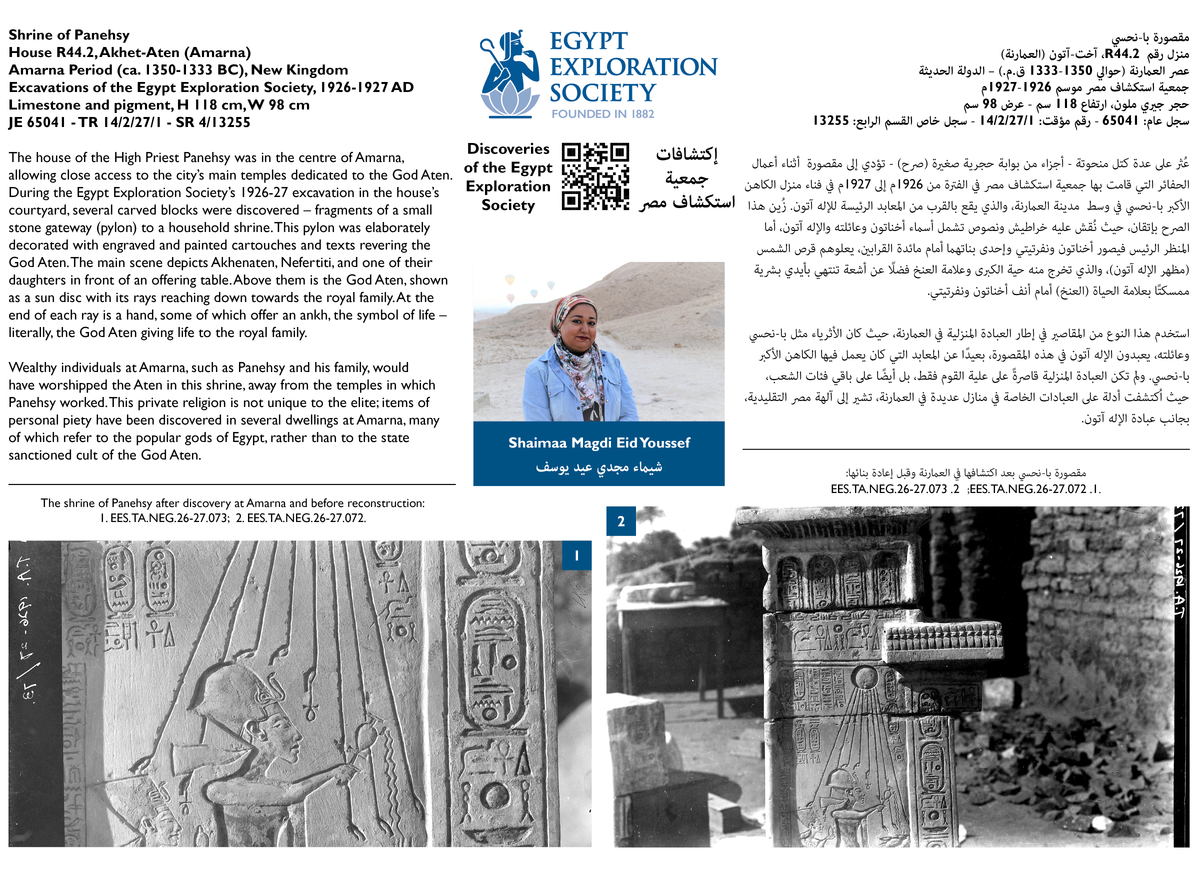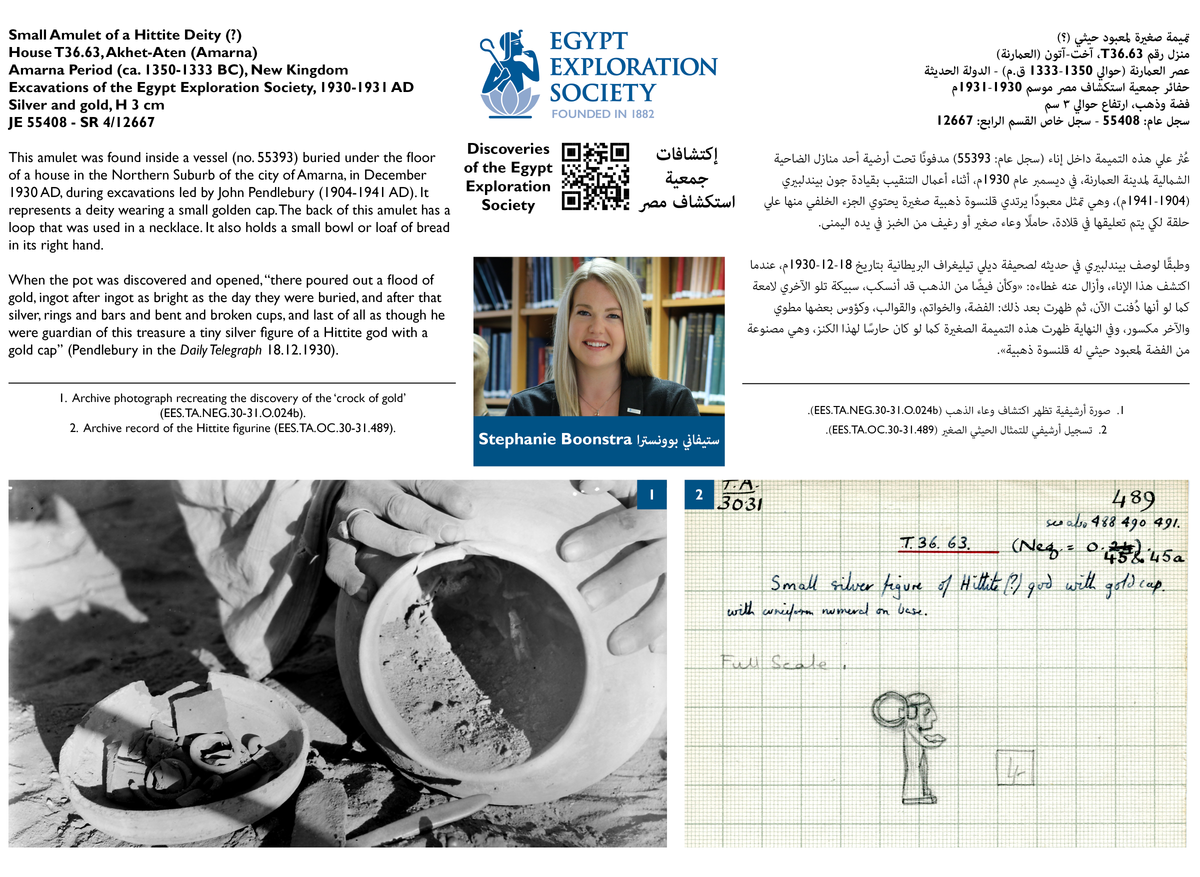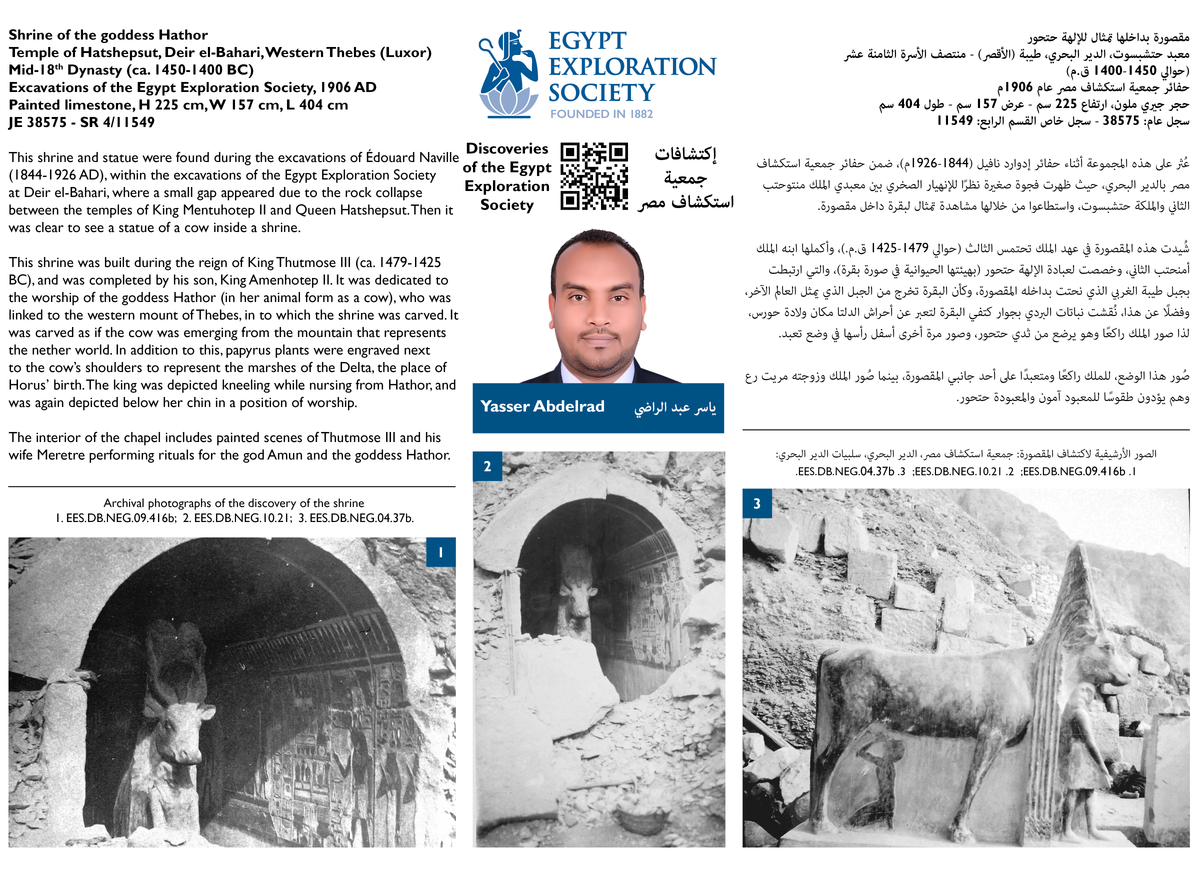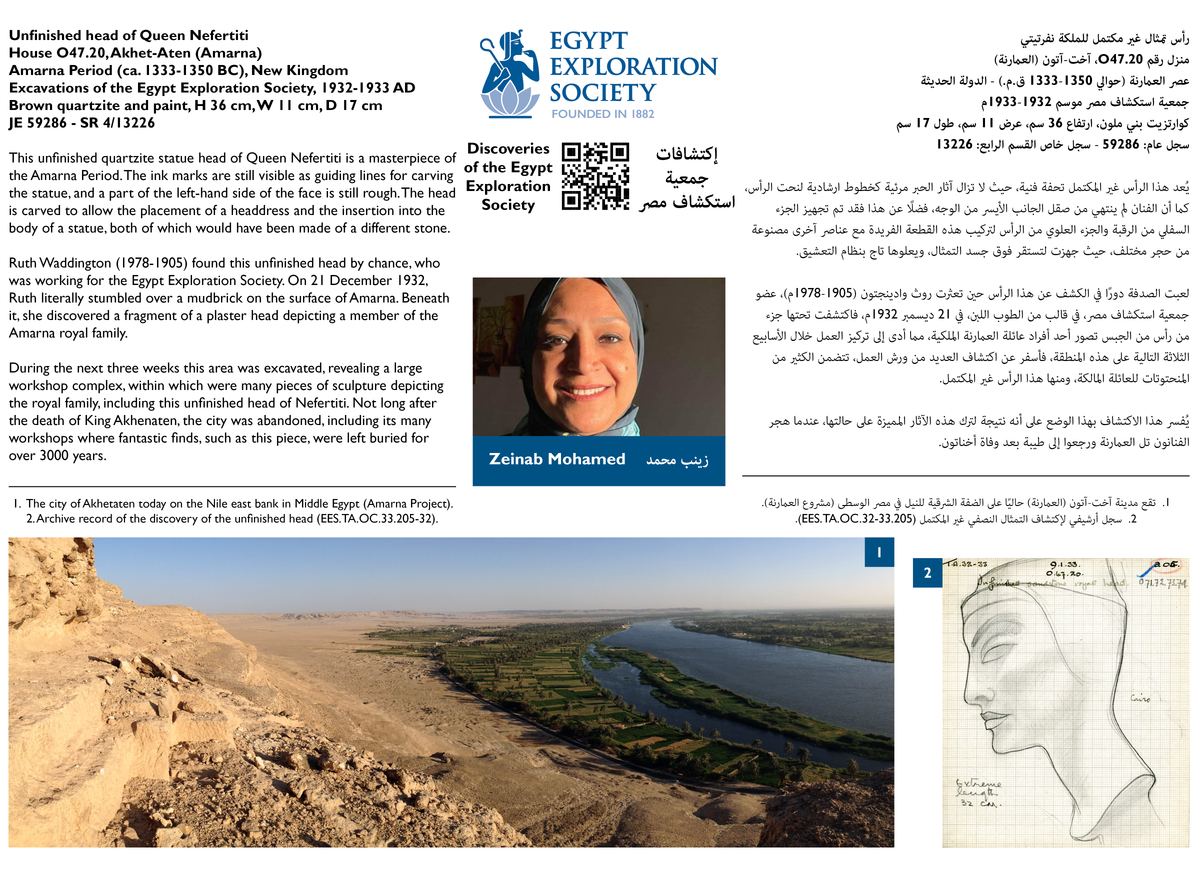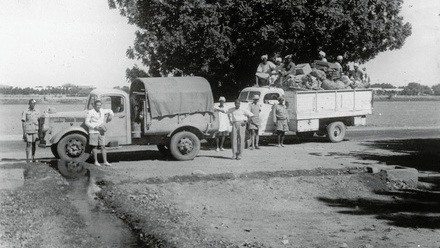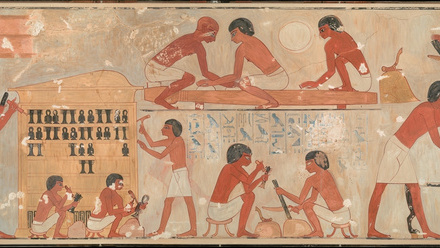Reuniting archives and artefacts
Over the course of its history, thousands of artefacts have been uncovered during excavations by the Egypt Exploration Society. Today, these discoveries can be seen in museum collections around the world, but nowhere are these more impressive than in Egypt.
The partage system of artefact distribution meant that duplicate items and those not considered of national importance were permitted to be exported from Egypt by the Service des Antiquités de l'Égypte. This practice ended in the 1980s and today, all items found during excavations in Egypt remain there.
Read more about the distribution of artefacts from British archaeology in Egypt in Scattered Finds by Alice Stevenson (UCL).
Until the 1980s, curators at the Egyptian Museum in Cairo were able to inspect discoveries and decide which items were retained in their collections. Now, many items on display in the Egyptian Museum were found during EES excavations, though the archives relating to them remain in the care of the Society in London.
In 2024, the EES launched the first-ever walking trail of the Egyptian Museum, taking visitors around the galleries to explore the ancient (and modern!) history of 12 artefacts on display. The panels were curated by 10 early career Egyptian scholars that participated in our 2022 Egyptological Archives Skills School and were edited by Dr Stephanie Boonstra and colleagues at the Egyptian Museum. This collaborative exhibition was generously supported by the British Council and demonstrates the impact of training combined with tangible outputs.
Watch the launch event
The exhibition was opened by HE Gareth Bayley, British Ambassador to Egypt, with Carl Graves (EES Director) and Ali Abdelhalim (Egyptian Museum Director) on 31st January 2024. A further display by the Griffith Institute, University of Oxford, was also launched with Daniela Rosenow.
Read the panels online
Click to download the PDF files of each panel
Papyrus contract of the Apion family by Ahmed Mansour (Bibliotheca Alexandrina)
Bucchis Bull Stele of Ptolemy V by Amany Abd el-Hameed (Helwan University)
Statue of a recumbent cow by Carl Graves (The Egypt Exploration Society)
Statuette of King Khufu by Marwa Mahmoud (Egyptian Museum Cairo)
Isis lactans figurine by Mostafa Tolba (German Archaeological Institute in Cairo)
Statue of King Senwosret III by Noha Mahran (Netherlands-Flemish Institute)
Lintel of Hatiay by Noura Seada (6th October University)
Stela of Queen Meretneith by Shahira Hassan (Ministry of Tourism and Antiquities)
Shrine of Panehsy by Shaimaa Magdi Eid Youssef (Ministry of Tourism and Antiquities)
Amulet of a Hittite Deity by Stephanie Boonstra (The Egypt Exploration Society)
Shrine of the goddess Hathor by Yasser Abdelrady (Nubia Museum, Aswan)
Unfinished head of Queen Nefertiti by Zeinab Mohamed (Grand Egyptian Museum)
The exhibition was on display from January to May 2024, during which time the Egyptian Museum was also decorated with banners featuring EES archival images of the unfinished bust of Nefertiti (Amarna) and the statuette of Khufu (Abydos). We would like to thank the British Council for their support, and the Egyptian Museum Cairo for their valued partnership and bringing this showcase for the research of EES scholars to the public.

